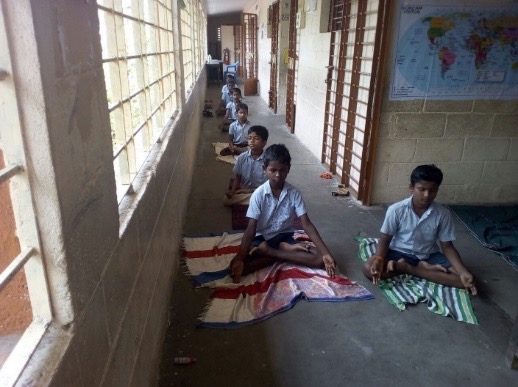My students of the fifth standard included a variety of learners having different learning needs. It was my duty to engage them all and ensure that I addressed the various needs of all the students. My aim was to make my students creative, confident in expressing their thoughts and ideas, proficient in English (reading, writing, and speaking), and good at arithmetic operations by the end of the year.

However, I realized that the conventional classroom teaching would not be adequate to achieve my aim owing to the diversity of the student group. It is then that I decided to adopt a holistic approach to education. Why not bring in drama, learning-by-doing activites, creative activities, songs, and fun into the classroom? Such an approach would not only cater to all the students, but it would also ensure their all-round development.

- Drama: This livens up the classroom. I started writing scripts adapted from the prose lessons in Tamil and English. The students were to choose their roles and stage the drama. The students took part in this activity with much interest. They also helped each other in the process. Initially, they did face some difficulties while reading the scripts, but they gradually started reading it fluently.
- Creative Activities: When pupils create something on their own, it builds their confidence. I asked my students to collect some waste materials (such as old newspapers, waste cloth, balls, egg shells, etc.) and bring it to class. Then, I gave them ideas on making dolls, birds, flowers, and other such things with those materials. I was amazed to see the output, and I have to say that my students are quite talented.
- Learning-by-doing Activities: Aristotle had said, “For the things we have to learn before we can do them, we learn by doing them.” I applied the learning-by-doing method to my classroom, mostly for teaching mathematics. The students started to enjoy the subject when they learnt it through activities. For example, the concept of Volume was taught in the following manner: At first, I asked the students to collect syringes, coins, pebbles, transparent tumblers, rulers, water, etc. and bring it to the classroom. Then I asked them to sit in groups. The students had to fill the tumblers with water using syringes and then calculate the volume of the tumbler. Following this, they had to put coins or pebbles inside the tumblers and measure the change in the water level. The students not only enjoyed the activity, but they also grasped the concept of Volume.
- Class Garden: Each student brought a plant (in bottles) to the classroom. Together, a class garden was created; it added beauty to the classroom. I encouraged my students to talk, sing, and play with their plants. They watered the plants and nurtured them with care. The class garden helped me in my discussion pertaining to the growth of plants as well as the need to take care of nature.
- Each Pupil Becoming a Teacher: I provided a chance to every pupil to be the teacher and teach a topic to the other students in the class. This activity enabled me to assess my own teaching skills at making them understand different concepts. As the students taught the class, they became more confident; they were not shy to teach in front of others.
- Yoga: I introduced my students to yoga. It was practiced twice or thrice in a week. The students were very interested to do it too. I could observe a change in their behaviour after doing yoga—they became calm and started concentrating on their studies more than before.
I have introduced various activities in my classroom in an attempt to provide a holistic education to my students, and it has been showing positive results. I will surely improve and continue to implement this approach in the days ahead.

Highlights:
- Learners are at different learning levels.
- To address a diverse learner group, a holistic approach was adopted.
- Drama, learning-by-doing activities, class garden, yoga, etc. were some of the activities performed in class to engage all learners.
- The students became interested, creative, and confident; they understood concepts better.
Teacher: Bharathi Roja, GPS Karikkalampakkam